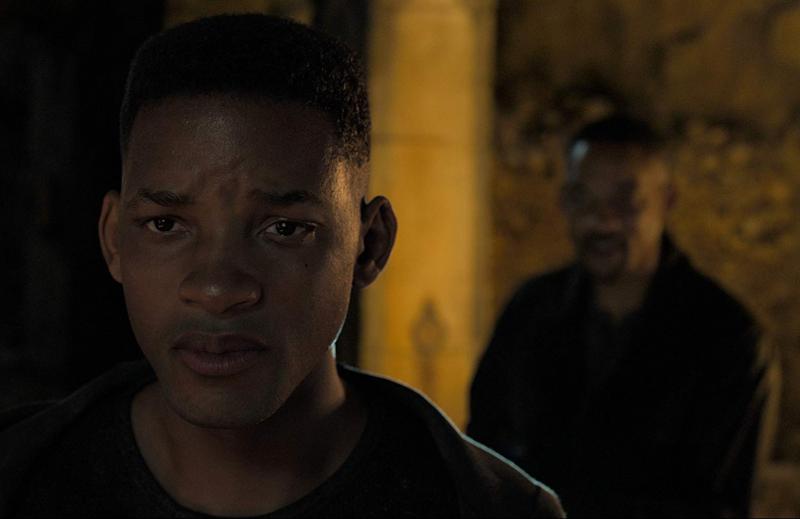‘Gemini Man’ filled with digital wizardry
Gemini Man has been floating around the Hollywood flotsam and jetsam since 1997. Disney took particular interest in it after it consumed a small computer graphics company and folded it into its now-defunct The Secret Lab visual effects house.
While The Secret Lab was short-lived, they started the building blocks for what would eventually be called “The Human Face Project,” a 2002 short that captured and recreated a lifelike computerized avatar of a living actor, albeit the actor’s younger self.
This was called the “Gemini Project,” and the history of it is a fascinating quest to advance digital recreation of living things, particularly humans. At the time, although impressive, it was deemed that the technology was just not quite advanced enough to adequately pull off a feature film with it.
That did not stop Hollywood from trying, and throughout that time, everyone from Harrison Ford, Nicolas Cage, and Tom Cruise to Clint Eastwood, Arnold Schwarzenegger and Sean Connery were attached in some way to the lead role of Henry Brogan, an aging assassin who becomes the target of a younger version of himself.
Skydance Studios purchased the rights to “Gemini Man” in 2017 and set to work with Will Smith as the lead and Ang Lee, who enjoys pushing technological boundaries, to direct. Lee last directed “Billy Lynn’s Long Halftime Walk,” which he shot in 120-frames-per-second. Audiences were off-put by the hyper-focused shots that captured perhaps too much detail.
Undeterred, Lee takes the same approach with “Gemini,” only this time, he has the additional burden of introducing the revolutionary technology that has been in the works for decades: having Smith share the screen with a completely digitized rendering of his younger self.
Smith plays a renowned government assassin on the cusp of retiring (naturally) until his “final mission” winds up being a dupe in which he kills an innocent man. This, of course, leads him to be the target of the same covert agency that he was once employed but the person who has Brogan in the crosshairs looks strikingly familiar to him.
In their initial confrontation and subsequent chase, Lee demonstrates his mastery of visuals, with his camera aligned to the action rather than the location, and the results are nothing short of breathtaking and visceral viagra.
But it does not take long for that rush to subside and the perfunctory, stilted narrative to undermine the action. Before and following that thrill of seeing the Smiths from decades apart sharing the screen, we must slog through exposition from cast members that feel so completely disconnected from one another, it’s as though they have been grafted in from a computer as well.
Brogan’s friendships feel more like narrative goalposts than actual characters. Elizabeth Winstead is thankfully given slightly more to do than most disposable roles for females in the genre, and Benedict Wong is dropped in three-quarters of the way through, though there is no sense of essential bond between him and the leads.
But Clive Owen deserves a special mention for his utterly confounding performance as the mustache-twirling bad guy with a completely illogical plot for domination.
Some may recall a similarly theme thriller a few years ago called “Looper,” with Bruce Willis, but that film had protracted an element of time travel within it and had thought through its commentary on aging and humanity repeatedly making the same mistakes.
One only wishes for such an element to warn the writers of “Gemini Man” to fill their film with more than just digital wizardry.
And when we entered her dining room, her face lit up. Her sweet smile was endearing as she said, “Thank you for coming!”























































